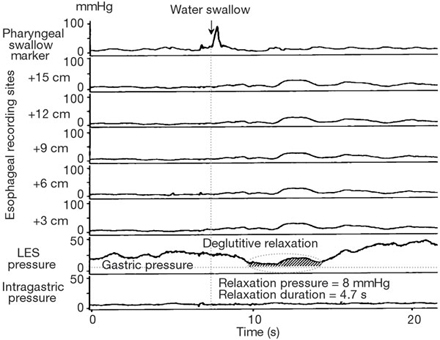Achalasia:
The diagnosis of achalasia is made on th e diagnostic triad of:
- History
- Physical examination
- Specialised tests
History - Increasing difficulty in swallowing, weight loss, halitosis and pain.
These features suggest the diagnosis of achalasia.
Examination - There is little to be seen except, perhaps, obvious loss of weight.Halitosis may be present and the symptoms of a cough and signs of chronic lung disease.
Specialised tests -
 Barium swallow: When a patient with achalasia is asked to swallow barium solution a typical radiological feature is seen.
Barium swallow: When a patient with achalasia is asked to swallow barium solution a typical radiological feature is seen.
The widened oesophagus tapers smoothly to form a rat tail or bird beak narrowed portion of the oesophagus.
The widened portion is due to the stretching resultant from chronic filling of the oesophagus.
The narrowed portion due to the failure of the lower sphincter to relax.
The column of barium would ordinary pass immediately to the stomach but is held up in the oesophagus in patients with achalasia.
Manometry: To confirm the diagnosis of achalasia pressure tests are performed to confirm the lack of contraction within the body of the oesophagus and the failure of the lower sphincter to relax on swallowing. The trace below illustrates these findings in a patient:
